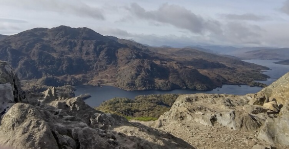Automation has the potential to lift repetitive, transactional activity from people so that they can focus their time on activities that can add more value. Are you interested?
Often the focus for automation is on all the pain it will take away and all the benefits that will follow. Headlines promise immediate results with a long list of opportunities to automate…….whilst this can be true, in reality getting to the sweet spot, where opportunities exist and automation can happen at pace takes time, planning, change management and a human centred mindset!
Since January 2023, we’ve been developing automation at University of Glasgow. It’s been a brilliant opportunity to be one of the first Universities in the UK to embed automation as a strategy and tool to help us. Our aim is the enablement of small strategic changes across services, processes and operations so that teams can focus on the more value add aspects of their roles and service development.
I thought it might be fun to share some of my thoughts, in a light hearted way, on some of the terrains we have been exploring in our search for automation opportunities.
Let me start by sharing a secret, the first rule of ‘hunting’ for automation opportunities is that it is a skill. Regrettably there aren’t easy to apply, one size fits all opportunities waiting across multiple sectors and industries to automate. The promise of automation is applicable to all, but the reality when working with complex, large organisations requires a tailored and individual approach. This is impacted by many things including:
- what data is available and how structured/reliable it is
- how streamlined the processes that could be automated are; are they done the same way across different departments, or are there many variations on the same process
- what is the vision for users and their journeys, how does technology determine this and how is the organisation setup to enable this
- what is the appetite for innovation and how are core internal services setup and resourced to support and enable automation
Sometimes it feels like going out into uncharted lands, hunting for the unknown and hoping for a prize…..but (and as a vegetarian I’m happy to say) we are not hunting to kill but hunting to enable and improve. Like any good hunter, the first thing we need to understand is the terrain we will be exploring. So far, we have encountered a few different terrains, I’d like to share them with you….
The desert
This is how it can feel when you are first starting out. You know that there are opportunities out there, but you can’t see them. Things feel vast, yet empty. You don’t know where to start or where you might find that first crucial watering hole. When faced with this terrain it is important to learn from the locals. Speak to people in the teams where you are focussing your automation efforts. Ask them about their routines, where they use many forms, spreadsheets and have multiple hand offs. Understand what it is they would delegate to a new member of staff if they were to get a helping pair of hands.
The ocean
Things feel very fluid and fast flowing, it is hard to anchor on any single area and searching for land can feel like a never ending challenge. To captain this terrain it is important to use the maps and direction available to you. What is your organisations strategy? How will automation enable and support that strategy, how can automation feed into it, ensuring that decisions made now will keep the organisation on course.
The forest
It’s impossible to see the wood for the trees. Everyone wants you to start with them and their areas. It’s hard to decide which path to choose, they all look the same and have potential but they can’t all be explored at the same time. This is where the richness of the forest needs to be explored. What do you know about your organisation, what business data exists to tell you where automation may be able to deliver benefit and provide results where most needed? For example, use customer and employee feedback to identify where pain is felt. Consider identifying departments that have a high turnover or employee lots of temporary staff to cover peaks in demand. Follow the crumb trail to understand where to start.
The city
Things feel slick and everyone knows what they are doing and when they need to do it. If it’s not broken, why fix it? Like any metropolis it can feel like things are working to a rhythm and there is no priority to innovate……however what happens to the city when there is no investment into the foundations that support it? For organisations that are reliant on spreadsheets, legacy systems and outdated approaches but seem to operate efficiently on the surface, how might automation help reduce risk and reliance on key individuals who hold everything together?
Have you explored any other terrains across your automation journey? Do you have any tips to share or thoughts on how to identify opportunities to feed an automation pipeline? Head to LinkedIn to share in the comments, thank you.
Jennifer Robertson, Head of Automation, Transformation Team


